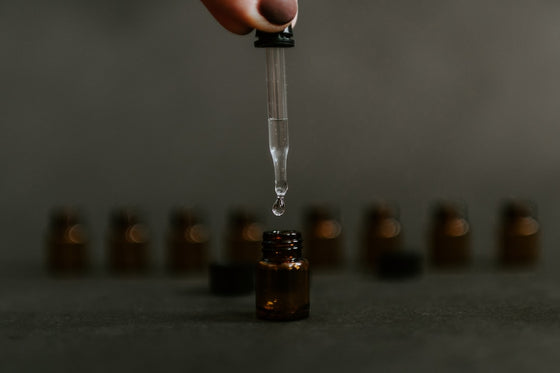The term ‘hair texture’ is used to define the width or circumference of your hair strand. Professionals usually classify your hair texture as coarse, fine, or medium.
While coarse hair has the largest circumference, fine hair has the smallest. Medium textures fall somewhere in the middle in terms of circumference and are often considered normal.
The texture of your hair usually changes depending on your hair type. Your hair type varies depending on the curl and thickness of individual hair strands.
In this article, we have listed a few remedies to improve your hair texture and some preventive tips to prevent further hair damage. Take a look!
Why Does Your Hair Change Texture?
To achieve gorgeous hair we end up putting our locks through a lot. While some color their hair, a few others perm, smoothen, or straighten their locks. Exposing your hair frequently to chemical treatments and blow-drying makes it dry and brittle over time. If you want to know what causes these unwanted changes and how you could improve your hair texture naturally, keep reading!
You may notice your hair changing texture with time because of:
Any of these factors could be responsible for your changing hair texture. However, irrespective of what is causing your hair texture to change, you can adopt a new hair care routine to improve it. You can incorporate a few home remedies into the same. Learn more about them below.
Home Remedies To Improve Your Hair Texture
Most of the remedies discussed below help promote hair growth. Using them regularly may reduce further damage and restore healthy and shiny hair. This will help you create a healthy hair care routine and transform your hair texture in the long run.
1. Coconut Oil
Coconut oil works as a natural conditioner with its moisturizing properties. It can penetrate hair shafts and prevent protein loss (4). This may help improve your hair texture and prevent breakage and split ends
You Will Need
1 tablespoon of cold-pressed coconut oil
What You Have To Do
How Often You Should Do This
You must do this 1 to 2 times a week.
Aloe vera gel is full of nutrients like vitamins A, B12, C and E that are beneficial for your hair and scalp. Its antibacterial properties may help refresh your hair and strip off excess sebum to give you bouncy locks (5). It helps in conditioning, strengthening, and moisturizing dry and brittle hair. It can also protect your hair from UV damage and prevent conditions like seborrheic dermatitis (6), (7).
You Will Need
What You Have To Do
How Often You Should Do This
Do this 2 to 3 times a week.
Onion juice contains sulfur, which is important for healthy hair. It gives hair its strength and elasticity. Thus, the deficiency of sulfur can result in dry and brittle hair (8). Onion juice also nourishes the hair follicles, aiding hair regrowth and preventing thinning (9).
You Will Need
1-2 tablespoons of onion juice
What You Have To Do
How Often You Should Do This
Do this 2 to 3 times a week.
Amla oil contains vitamin C, a powerful antioxidant that provides nourishment to your hair and also helps with graying (10).
You Will Need
1-2 tablespoons of amla oil
What You Have To Do
How Often You Should Do This
You may do this 1 to 2 times a week.
Green tea contains many beneficial polyphenols that are excellent for promoting hair growth. It can also prevent hair loss and make your hair healthy (11). However, there are no scientific studies to prove the efficacy of green tea in improving hair texture. The current studies prove its effect only on hair growth.
You Will Need
What You Have To Do
How Often You Should Do This
You must have green tea twice daily for the desired effects.
Olive oil is loaded with vitamin E and antioxidants, which work wonderfully in enhancing hair growth and texture. Olive oil helps in moisturizing and conditioning your hair naturally (12).
You Will Need
1-2 tablespoons of olive oil
What You Have To Do
How Often You Should Do This
You must do this twice every week.
The yolk of the egg is rich in fats and protein that are excellent for curbing brittle hair, breakage, and split ends. It contains peptides that nourish the hair and aid hair growth (13).
You Will Need
What You Have To Do
How Often You Should Do This
You must do this once a week for optimum benefits.
Note: To avoid the egg stench, you can add a few drops of any essential oil to the mix.
Deficiencies in certain vitamins can also damage your hair texture (14). Vitamins A, C, D, and E are necessary for moisturized and damage-free hair.
These vitamins not only nourish your hair but also help with split ends and hair loss. You can get enough of these vitamins by consuming foods like carrots, spinach, kale, citrus fruits, eggs, fish, milk, and nuts.
a. Lavender Oil
Lavender oil can help prevent hair loss with hair growth-promoting activities. It can also increase the number of hair follicles, thus increasing the density of your hair (15). This may help promote your hair health.
You Will Need
What You Have To Do
How Often You Should Do This
You must do this at least once a week.
b. Rosemary Oil
Rosemary oil promotes hair growth. It enhances the hair texture and increases the density of hair and is also apt for treating hair loss (16). This remedy is beneficial for people with fine and brittle hair.
You Will Need
What You Have To Do
How Often You Should Do This
Do this 1 to 2 times a week.
Your diet also matters when it comes to enhancing the health of your hair. Eating right will improve the efficiency of the above remedies. Given below are some foods that will help you in achieving softer and healthier hair.
Nutrients (and their foods sources) that are known to help in improving the texture of the hair are (17):
It is time to take a few tips to prevent damage to your hair strands.
Prevention Tips
To get a clearer understanding of your hair texture, here’s a detailed look into the different hair types.
The hair types fall under categories 1 to 4. Within these categories, the amount of curl in the hair strands is represented with a letter ranging from ‘a’ to ‘c’.
Type 1 Hair
This type of hair is naturally straight and has no curls. It is usually shiny and oily due to lack of curls. Within the Type 1 category, there are Type 1a, Type 1b, and Type 1c subcategories.
Type 2 Hair
If your hair is naturally wavy, forming an “S” shape, it falls under the Type 2 category. This type is not as oily as Type 1 hair, but it is neither too dry. Type 2 hair is further categorized as Type 2a, Type 2b, and Type 2c.
Type 3 Hair
This hair type is naturally curly and forms a defined “S”. Type 3 hair is known to form ringlets without having to use any hair products or tools and is usually dry. Under the Type 3 hair category, there are Type 3a, Type 3b, and Type 3c types.
Type 4 Hair
Type 4 hair is tightly drawn but does not form ringlets like Type 3. Also, this type of hair hardly changes shape whether it is dry or wet. Due to the shape of this hair type, you will notice that its hair strands are extremely dry. Type 4a, Type 4b, and Type 4c types come under this hair category.
Some individuals may have a combination of the above hair types. Some of them will have certain strands that are sleek and a few others with curls.
Once damaged beyond repair, there is no other option but to chop off the damaged hair. Hence, if you suspect that your hair texture is deteriorating, address the issue immediately.
Hope this article addressed all your queries. Share your thoughts in the comment box below.
Frequently Asked Questions
Does hair texture change with age?
Yes, your hair can change in many ways with aging, including changes in its texture.
Does shaving head change hair texture?
Shaving can neither change your hair texture nor make it grow faster or darker.
How to test your hair texture?
A relatively easy way to test your hair texture is:
• Wash your hair.
• Air-dry it.
• Cut a sewing thread that is 6 to 8 diameters long.
• Pull out a dry hair and place it next to the thread.
• Compare the hair strand to the thread.
• Thin hair – If your hair strand is thinner than the thread
• Medium hair – If the hair strand is as thick as the thread
• Thick hair – If the hair strand is thicker than the thread
Shaheen holds a postgraduate degree in Human Genetics and Molecular Biology. She is a Geneticist with proficiency in Biotechnology, Immunology, Medical Genetics, Biochemistry, Microbiology, and Genetic Counseling. Her passion for writing and her educational background have assisted her substantially in writing quality content on topics related to health and wellness. In her free time, Shaheen loves to explore the world and the different flavors/cuisines it has to offer. Photography is another hobby she has developed of late.





